A Step-by-Step Guide to Writing a Blog Post [+Free Blog Templates]
![A Step-by-Step Guide to Writing a Blog Post [+Free Blog Templates]](/_next/image/?url=https%3A%2F%2Fwordpress.peppercontent.io%2Fwp-content%2Fuploads%2F2021%2F05%2F94.png&w=1536&q=75)
Table of Contents
- Blog Post: Planning Phase
- Blog Post Types
- How to Write a Blog Post Template
- Blog Post: Writing Phase
- Blog Post Writing Tips
- Editing Tips
- Key Takeaways
- Conclusion
- FAQs
Whether it’s for your business or for clients, crafting a blog post can be daunting for beginners. The process of blog writing goes beyond writing skills. What’s the mantra, you ask? Read on to know all about writing quality blog posts.
Writing a blog post isn’t just about writing. The process doesn’t even begin with writing. Planning and researching for your post is the initial crucial stage. The next step is to write a blog post template.
For an easy read, we’ll break the process into two broad parts: Planning and Writing. We have also detailed the process of how to write a blog post template and attached free blog post templates below.
Blog Post: Planning Phase
This is when you brainstorm or ponder and scheme before churning out content. Before beginning the process of blog writing, or curating a blog post template, you must plan and figure out what your target audience wants.
1. Know your audience (KYA)
Whatever you write—stories, novels, songs, drama, articles—is for an audience. You aren’t about to write for nobody, are you? How you write a blog post would depend a lot on who the post is for. Thus, knowing your audience is very important before writing a blog post template.
Say you wrote a highly technical piece around calligraphy and typography. Would sport-loving audiences find the piece interesting? One out of 100 may, but that’s not what you want. Write about things all your audience can relate to.
2. Assess your audience
When you write for older demography, you will refrain from gen Z slangs unless the content is on modern terminologies for the oldies. From topic selection to framing the content, let the readers decide.
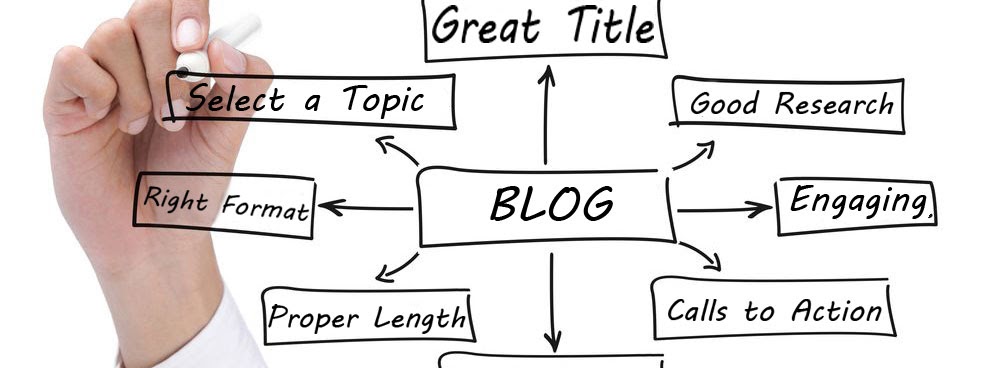
This post, for example: for the audience on ‘how to write a blog post’. Skip ‘what is a blog post’ – they probably already know that, whereas, maybe mention ‘what is a good post’ and related terms like ‘Buyer Persona’.
- The post better should be around the readers’ subject of interest. For example, How to come up with a topic(s) for a blog post.
- Is this a guest post? Go to the blog/website you’re to write for, take a cue from titles already covered.
- Select a topic you love. Makes the writing more fun.
- What if you’re compelled to work on an unfamiliar subject? Many content writers often work on topics pretty new to them. Yet, they craft meaningful content. How? With good research.
- Explore a blog post idea list to help you decide. After you have an idea of what you want to write about, sit down to frame your blog post template.
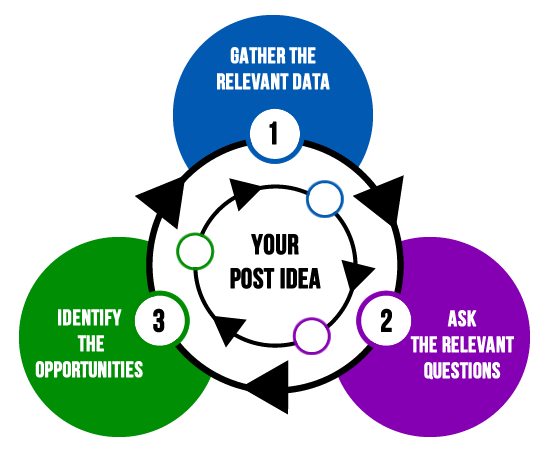
Blog Post Types
Should your post be in the form of an article, listicle, presentation, or something else? Explore various types of blog posts and choose the best for your case. Here are a few blog post templates that are proven to work. It is very easy to work on listicles. You can make a mindmap of all you want a blog post to include and make those subheadings in a blog post template. However, mix and match different types of blog formats. If you are just starting out, you could begin with detailed guides and listicles blog posts.

How to Write a Blog Post Template
A blog post template is the skeletal structure of the content or the blueprint. It brings efficiency to the overall blogging process. Think about:
- Elements to be covered within the given topic
- Sub-topics/points you can’t miss
- Ensure you stay within the structure lest you go off-topic
- Construct coherent information flow; enhances the user interface
In a rush? Skip to free blog post templates.
What to consider when drafting blog post template:
- Elements in the lead and what to include in the intro
- How much should be covered in one post? Consider word limits. There can be a part 2 on related subtopics, so avoid information overload
- Content style, refer blog post type
- Visuals placement
- Conclusion and how to sign off
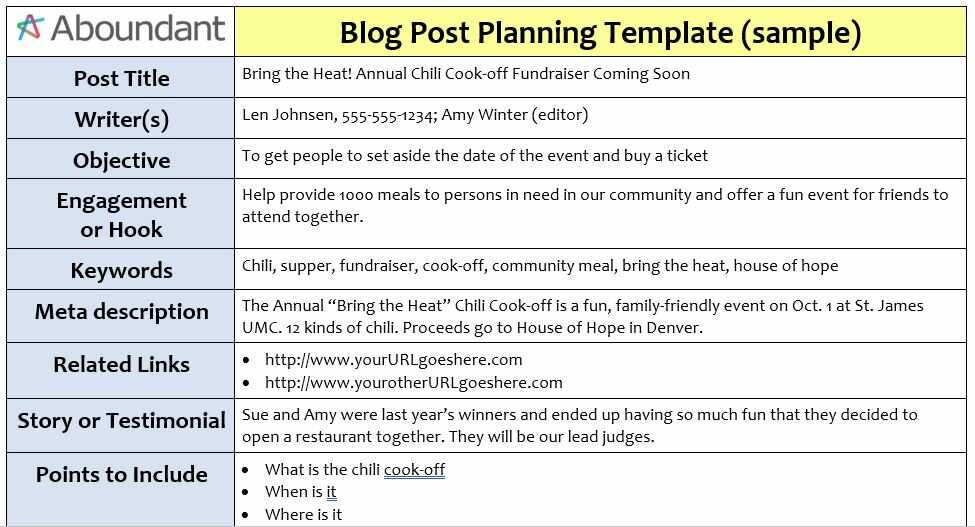
Example from this post:
Working title: Beginner’s guide to writing a blog post
Selected Elements: good blog posts, how to write blog posts how to write a blog post template, the process of blog writing
Related but excluded subtopics: free blog post templates, high traffic for blog post content, and so on.
Thus, we picked some elements and left the rest for another day.
Laying down the blog post template
Our blog post template was structured into something like this:
- Working title
- Intro: what readers can expect from the post
- Two phases of blog post writing:
(a) Planning
- KYA: Assessing audience
- Topic: Choosing the right topic
- Blog post type: Brief intro
- Outline: What and how
- Research: Tips
(b) Writing
- Headlines
- Content: Intro, body, tips
- Visuals
- Editing: Importance; tips
- Conclusion: It’s a wrap
Outline for your writing reference can be roughly put. You can tweak the structure as and when necessary.
- Research
The first research you must do is to assess audience interest and explore topics. The next research is to gather information along with useful references to support your content.
Researching tips for your blog post content:
- Utilize the internet; refer to documents (research papers, books, etc.)
- Use multiple reputed and credible sites for source – at least four to five
- Check statistics and trends
- Save references and quotes to cite in your post
- Crosscheck claims, facts, and data
- Don’t simply repeat; seek what hasn’t been mentioned in the source material(s). If you put down subheadings in a blog post template, the process of blog writing turns out to be more organized.
- Reach out to experts
- Take notes as you go, saves you time
Refer to this step-by-step guide on how to research for the blog post.
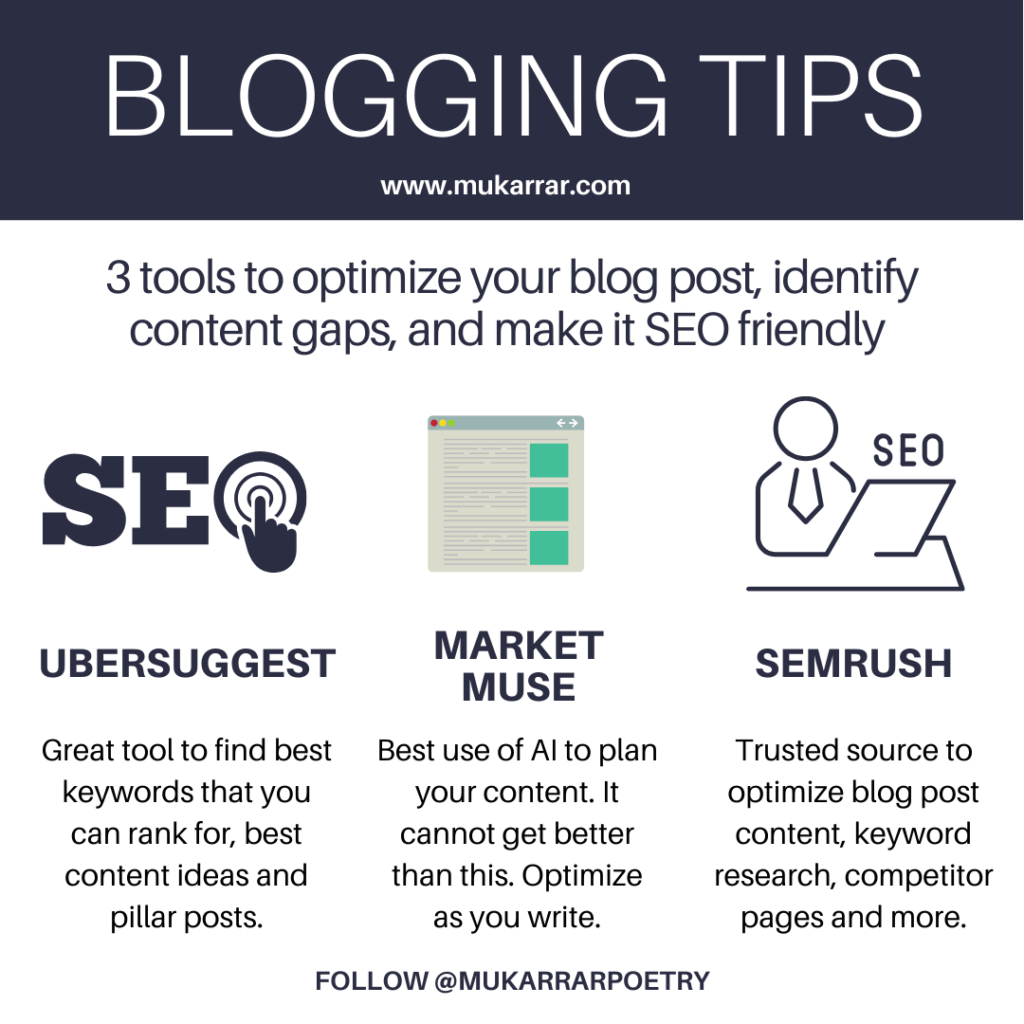
Blog Post: Writing Phase
So, now you have a clear picture of what your post will be about and how you’re going to frame it. By this time, you’ve also carefully researched the subject and know how to write a blog post template. After writing a blog post template, you begin to write the post. Writing a blog post can take time, so don’t fret if you cannot complete it in one go.
1. Headline
You can either write the headline first and build the content around it or do the reverse. We recommend putting subheadings in a blog post template first. Headlines can be in the form of questions, statements, claims, suspense, etc. Make headlines enticing enough to lure readers into the content.
2. Introduction
You can either work on the crux of the body first and then frame the intro or begin with it. The intro should substantiate the headline. The first paragraph called ‘Lead’ conveys to readers what you have in store for them; make it sound promising.
3. Body
With the headline in place, move to the body. Use the blog post template and work your content around it. No need to follow the structure strictly; you may begin from any part; just make sure the content has all the elements listed in the blueprint. Use the information gathered during research.

Blog post writing tips:
- Have short sentences, thin paragraphs
- Avoid run-on sentences
- Use active, natural voice
- Use bullet points and numbering
- Use examples
- Include Call To Action (CTA)
- Write for everyone, use simple language
- Borrow points, don’t plagiarize
- Incorporate SEO friendly keywords and optimization
- Link to credible sites; use internal links
- Editing and proofreading
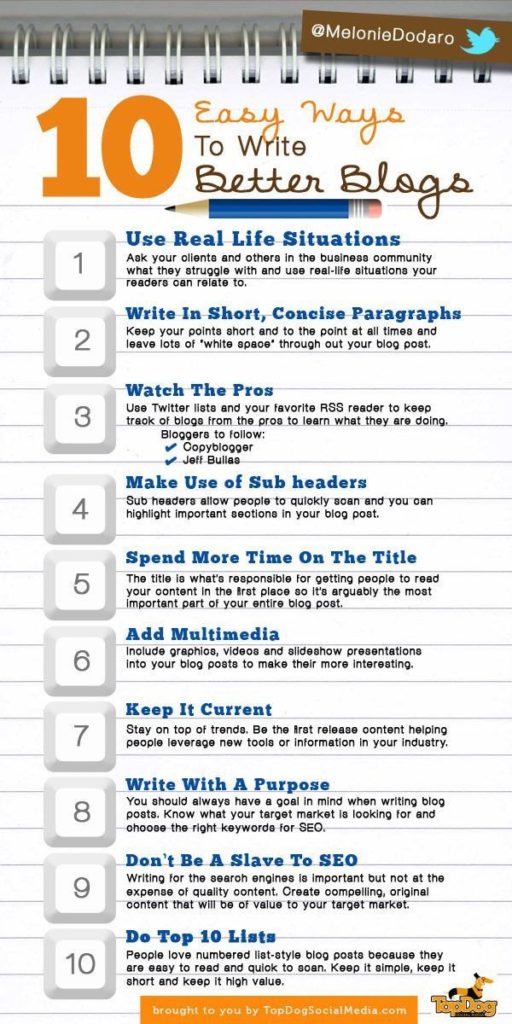
There’s no such thing as a draft not needing an edit. Correct grammar, spellings, sentence structure; remove redundancy, check word usage; review headline, verify hyperlinks.
Editing tips:
- Read the content aloud, restructure phrases that sound weird
- Have a fresh pair of eyes to catch the author’s blind spots
- Use appropriate headline tags
- Review on blog page before publishing
- Use editing tools
- Keep editing until absolutely content with the content (no pun intended)
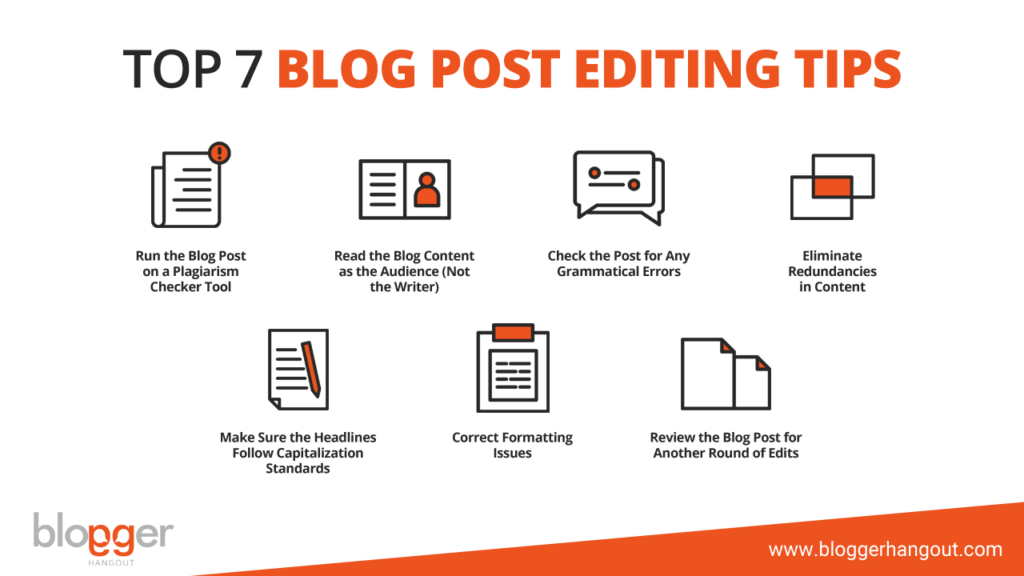
- Images and videos give a much-needed break from otherwise draggy texts. Incorporate wherever possible, and always use copyright-free images and always credit source. Visually appealing content foster more engagement.
Key Takeaways
- The process of blog writing begins with writing a blog post template.
- Writing a blog post template involves tons of research. You have to tap into the user’s mindset and deliver content accordingly. If your blog post template is detailed, your writing process would also be much faster.
- To write a blog post template, you must first make a mind map of what to include in the blog post. Make subheadings and input them into the template.
- When you are writing a blog post template, you could separate the blog, regardless of the type, into three parts: heading, body, and conclusion.
- The headline and CTA are two of the most important parts of a blog post.
- Always edit your blog post before publishing.
- Never plagiarise content from anyone. If you are copying someone else’s blog post template, make sure to give credit. It is an opportunity to grow your network.
Conclusion
A detailed plan, good research, and a proper outline are all you need for an awesome blog post. Writing a blog post template is probably the hardest part. Your blog writing process becomes much easier and faster when you have a proper and detailed blog post template in place. Writing skill is always a bonus. This post could go on forever if we were to cover other blog post guides. Tell us if we missed any important stuff. Now, write that first blog post!
FAQs
1. Make a good topic choice. Picking a good topic for a blog post is the first step.
2. Conduct thorough research.
3. Create a list of important points to remember and begin writing a blog post template.
4. Begin writing your blog post.
5. Make a strong first impression on your readers.
6. Write like you’re speaking.
7. The blog writing process would be easier with the blog post template.
8. The subheadings in the blog post template make it scanning-friendly.
9. Make use of images to engage your audience visually.
Use a blog post template for your blog posts to make things simple for your viewers. Each post should have a distinct beginning, middle, and conclusion, with enough headers and subheadings to help readers navigate the content. Numbered lists are useful since they show how much of the article remains to read. There are plenty of free blog post templates available online.
Creating a blog post template is the most essential step before writing a blog post. It is one of the most inexpensive ways of ensuring that your blog would be detailed. There are a few more uncommon ways to monetize your blog that you may not know.
1. Google Adsense is a revenue-sharing program that enables you to make money from your blog.
2. Affiliate Marketing. It’s another popular way of monetizing a blog.
3. E-commerce selling is another way of monetizing a blog.
Earnings from affiliate marketing are the simplest and most popular methods for novices to earn money blogging. You are under no commitment to have your products or services. You earn a commission when customers buy other people’s products via your website. Some experienced bloggers give out free blog post templates in exchange for your email address. It is a subtle way of growing one’s email list. They would send out newsletters and grow their fan base, leading to more opportunities for conversions.
There are many strong reasons to begin a personal blog, but only a few strong ones to begin a corporate blog. Blogging for companies, projects, or anything else that may generate revenue has a straightforward objective: to increase your website’s visibility in Google’s search engine results pages (SERPs).
You depend on customers to keep purchasing your products and services as a company. As a start-up business, you rely on blogging to help you connect with and grab the attention of prospective consumers. Your website would be invisible if you don’t have a blog, but blogging makes you searchable and competitive.
As a result, the primary purpose of a blog is to link you with the right audience. Another goal is to enhance the traffic volume and quality of your website. Start curating a blog post template and publish that first blog post. Take constructive criticism and put it to good use.
A blog is a website with a reverse chronological arrangement of content. Entries or “blog posts” are terms used to describe blog content. A blog post template is the rough outline of a blog, with headings and subheadings. Your blog writing process becomes much faster with a template in place.
A single person or a small group of individuals usually writes a blog to provide information conversationally. However, there are currently various corporate blogs that give a great deal of informative and thought-leadership content.
A blog is a website subset. Blogs use blog software and layout to simplify and modernize the process of creating, producing, and posting content. If you are copying a blog post template from someone else, make sure that you give them due credit.
While blogs may modify to do almost anything, most blogs include new content weekly and the opportunity for readers to make comments. However, several well-known websites utilize the WordPress or Blogger blog platform to create and publish content that doesn’t look like traditional blogs.
Latest Blogs
Explore how Google’s 2025 AI search updates triggered ranking chaos. Learn actionable strategies to adapt your SEO for AI Overviews, zero-click searches, and SERP volatility. Stay ahead now.
Learn how to rank on AI search engines like ChatGPT, Perplexity, and Gemini by optimizing your content for authority, structure, and relevance. Stay ahead in AI-driven search with this strategic guide.
Explore the best healthcare SEO services for your medical practice. Improve online visibility and effectively reach more patients in need of your services.
Get your hands on the latest news!
Similar Posts

Content Analytics
8 mins read
Google I/O 2025: AI Search Shake-Up & Ranking Volatility

Artificial Intelligence
5 mins read
Top AI Blog Writing Tools for Website Monetization

Blogging
10 mins read